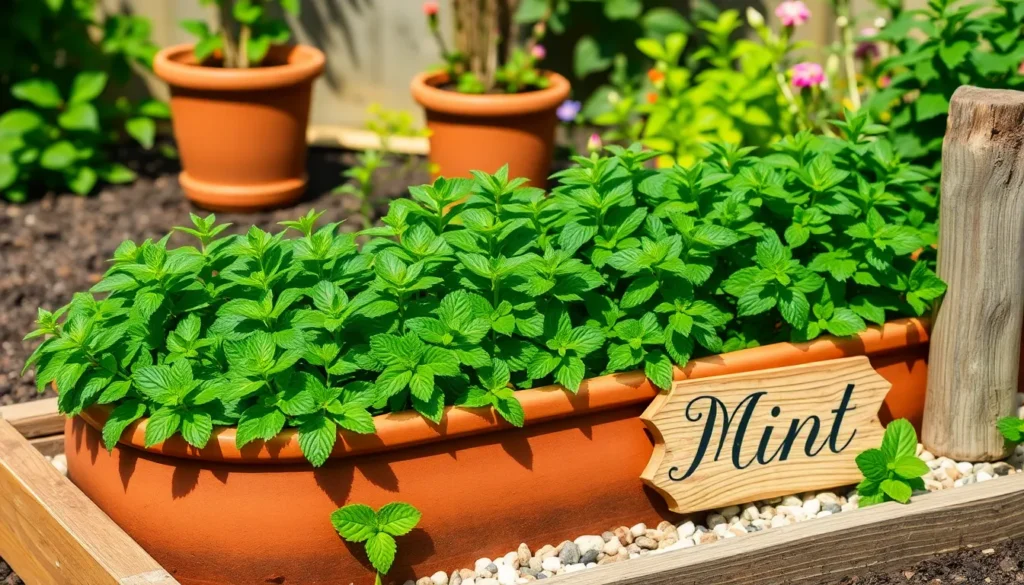Mint is a delightful herb that can transform your garden with its refreshing aroma and culinary versatility, but it does have a notorious reputation for taking over if left unchecked. For both budding gardeners and seasoned green thumbs, understanding how to cultivate mint without letting it spread uncontrollably is a rewarding endeavor that ensures this vibrant plant remains a cherished addition to your garden rather than an overwhelming guest.
In this article, we’ll delve into practical techniques to keep your mint in check, ensuring it grows lush and flavorful without encroaching on neighboring plants. Whether you’re just starting your gardening journey or have years of experience, you’ll find accessible solutions and insightful tips to maintain a flourishing yet controlled mint patch.
You will discover how to utilize containers, choose strategic planting locations, and implement effective barriers, allowing you to enjoy all the benefits of mint without the stress of managing its wild nature. By the end of this guide, you’ll be equipped with the knowledge to nurture mint responsibly, creating a harmonious balance in your garden that you and your mint will both thrive in.
Select a Suitable Container

Choosing the right container for growing mint is essential to prevent its invasive nature while still allowing the plant to thrive. Opt for a container that is at least 12 to 16 inches wide and deep, providing enough space for roots to grow without spreading uncontrollably.
It’s important to select a container with adequate drainage to avoid waterlogged soil, which can harm mint roots. Ensure that the container has several drainage holes at the bottom to promote healthy root development.
Materials matter when choosing a container; clay or terracotta pots are excellent because they allow for better air circulation. However, if you live in a warmer climate, consider using a plastic container to retain moisture better and prevent the soil from drying out too quickly.
Position the container in a spot where your mint can receive full to partial sunlight, as mint thrives in bright conditions. Regular watering is crucial, so aim to keep the soil consistently moist without being overly saturated.
Use Quality Potting Mix
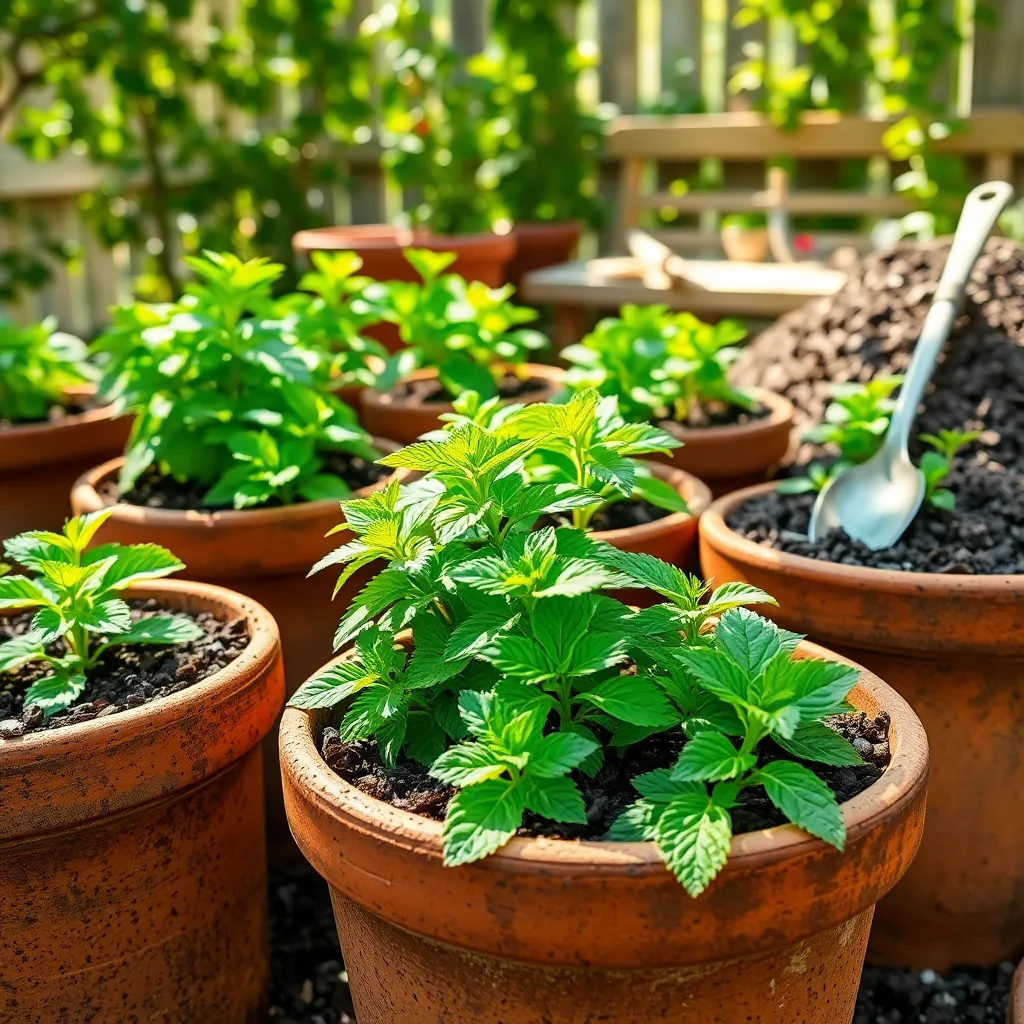
Using a quality potting mix is essential when growing mint in containers, as it provides the ideal balance of moisture retention and drainage. Choose a potting mix that is lightweight and formulated specifically for container plants, ensuring your mint receives the nutrients it needs to thrive.
Look for a mix that contains ingredients like peat moss, perlite, or vermiculite, which help maintain moisture while preventing root rot. A well-draining mix ensures that water doesn’t collect at the bottom of the container, which can lead to overwatering issues common with mint.
For those looking to give their mint a growth boost, consider adding a slow-release organic fertilizer to the potting mix. This will provide a steady supply of nutrients over time, helping the mint maintain healthy growth without frequent feeding.
Water your potted mint regularly, aiming to keep the soil consistently moist but not waterlogged. As a rule of thumb, water when the top inch of soil feels dry to the touch, adjusting the frequency based on the season and your local climate.
Plant Mint Seeds Carefully
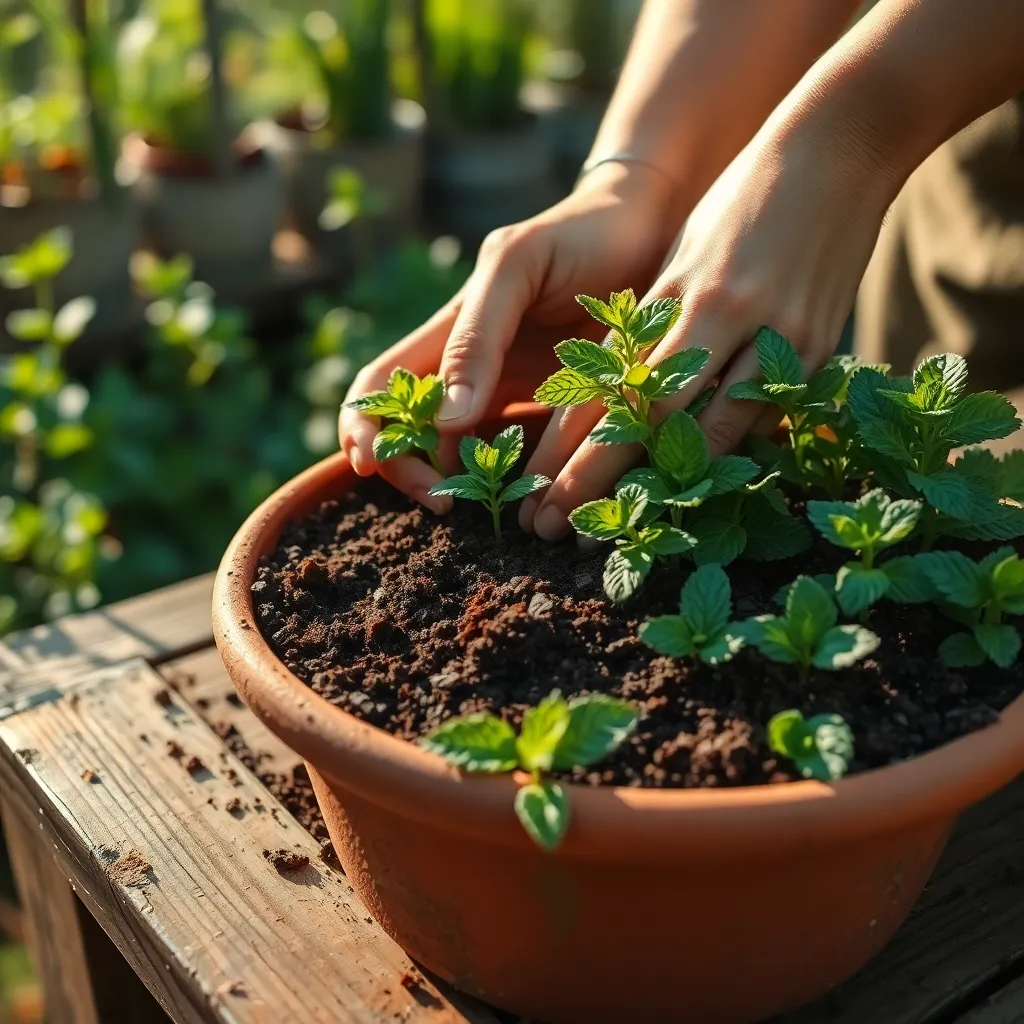
Planting mint seeds carefully is crucial to ensure a controlled and successful mint garden. Start by choosing a container that is at least 12-16 inches wide and has good drainage to prevent waterlogging.
Ensure the soil is loose, well-draining, and rich in organic matter, such as a quality potting mix with added perlite or vermiculite. This will provide the optimal environment for mint seeds to germinate and grow robustly.
Scatter the mint seeds evenly across the surface of the soil, as they are very small and should not be buried deep. Lightly press them into the soil with your fingers to ensure good seed-to-soil contact, but don’t cover them completely, as they need light to germinate.
Maintain consistent moisture by misting the soil gently with water. This will prevent the seeds from being displaced and ensure they have the moisture necessary for germination, which typically occurs within 7-14 days.
Once the seedlings emerge, thin them out to maintain about 6 inches of space between each plant. This spacing will allow the mint to grow vigorously without overcrowding, helping prevent the rampant spread commonly associated with mint plants.
Prune Regularly to Control Growth
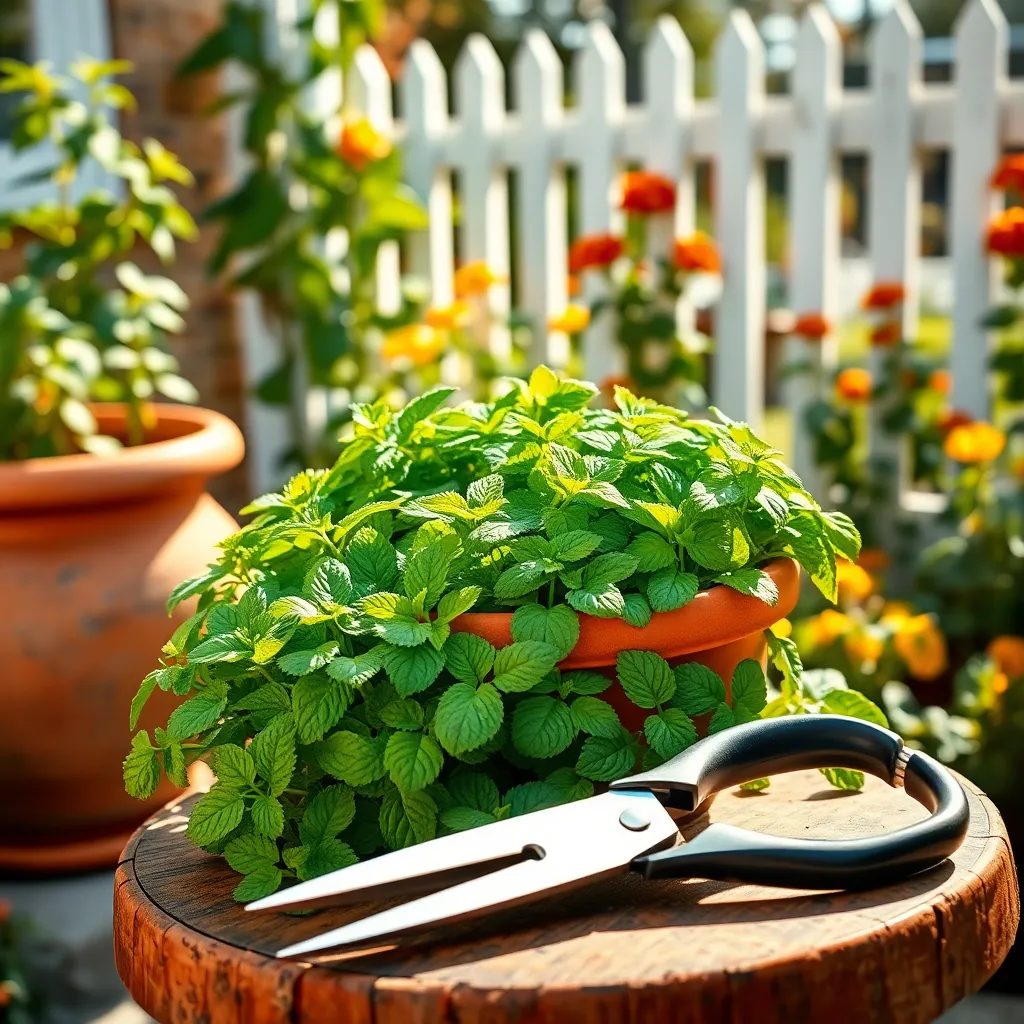
Pruning mint regularly is essential to control its growth and prevent it from taking over your garden. Mint is a vigorous spreader, and without pruning, it can quickly become invasive, overshadowing other plants.
To prune effectively, use clean, sharp scissors or pruning shears to trim the mint stems back by about one-third of their length. This not only helps manage its spread but also encourages bushier growth, resulting in a fuller plant.
For best results, prune your mint every few weeks during the growing season, particularly in spring and summer. This regular maintenance will keep the plant healthy and prevent it from blooming, which can cause it to produce fewer leaves.
As a more advanced tip, consider removing any flower buds as soon as they appear. Doing so will redirect the plant’s energy back into leaf production, ensuring a continuous supply of fresh mint leaves.
In addition, maintaining well-drained soil conditions can help control mint’s growth. Ensure your mint is planted in a container or raised bed to limit its root spread, and water only when the top inch of soil feels dry.
Monitor and Adjust Watering
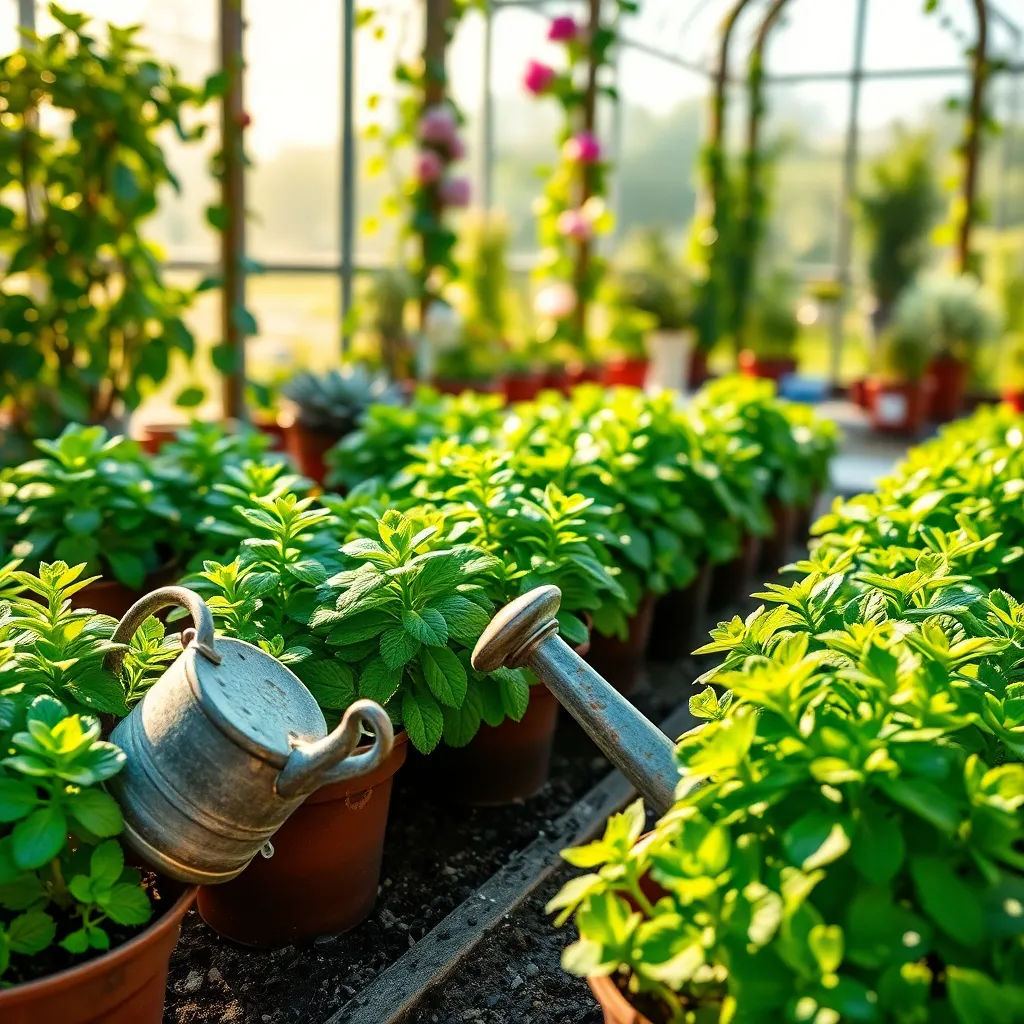
Monitoring and adjusting your watering routine is crucial to successfully growing mint without letting it spread uncontrollably. Mint thrives in moist soil, but overwatering can lead to root rot, while underwatering can stunt its growth.
Check the soil moisture regularly by inserting your finger about an inch into the soil. If it feels dry at this depth, it’s time to water; if it’s still moist, wait a couple of days before checking again.
For beginners, a general rule is to water mint every two to three days, adjusting based on weather conditions and soil drainage. In hotter climates, you may need to water more frequently, while in cooler or more humid areas, watering less often could be sufficient.
Using mulch can help retain moisture in the soil, reducing the need for frequent watering and keeping the mint’s roots cool. Advanced gardeners might consider using a drip irrigation system to provide consistent moisture without overwatering.
Conclusion: Growing Success with These Plants
In nurturing relationships, much like growing mint without letting it overtake your garden, balance and intention are key. Firstly, set clear boundaries to protect your personal space while fostering closeness. Secondly, regular communication acts as a gentle pruning, keeping both partners in tune and misunderstandings at bay. Thirdly, prioritize quality time, ensuring your relationship thrives without overwhelming your individual pursuits. Fourthly, practice gratitude, which serves as the nourishing soil, enriching your connection. Lastly, embrace growth, allowing your relationship to evolve naturally without losing its core essence.
To put these concepts into action, start by having an open conversation with your partner about boundaries and shared goals. This small step can significantly enhance mutual understanding and connection.
Remember, relationships, like gardens, flourish with consistent care and attention. Save or bookmark this article to revisit these strategies and track your progress over time. As you implement these principles, envision a future where your relationship not only survives but thrives, equipped to weather any season with grace and resilience. Your journey to relationship success begins today; nurture it, and watch it grow.

